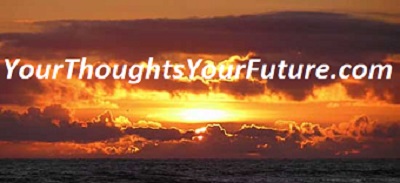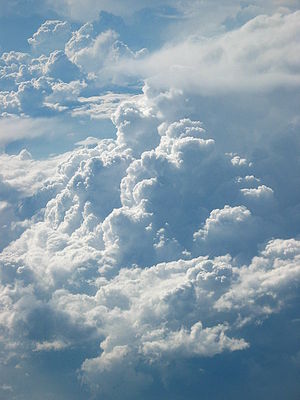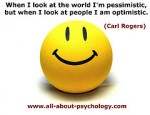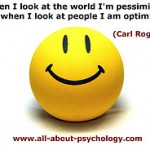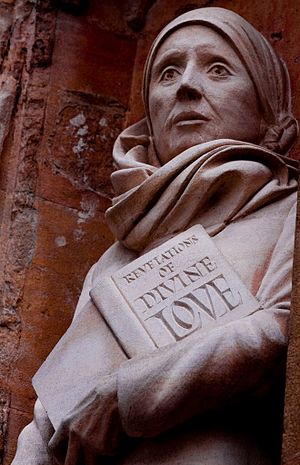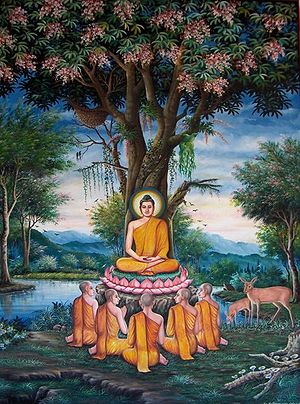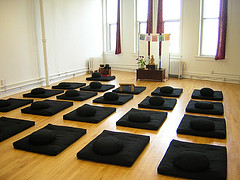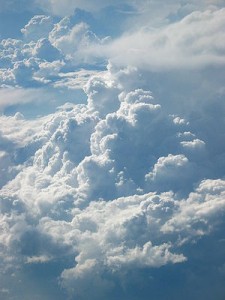 Getting Unstuck When the Head and the Heart Disagree
Getting Unstuck When the Head and the Heart Disagree
By Ronda LaRue
The anxiety of being faced with a crossroad in life where a next decision must be made in order to move forward from this stopped, stuck place, is often tremendously stressful.
The inner debate and frustrating angst can seem insurmountable and hopeless. That’s what makes it so paralyzing; that’s how we stay stuck. And in a way, the situation is indeed insurmountable and hopeless. Let me explain. The situation is insurmountable in the aspect that two arguing forces not only want two different choices, but that they don’t even speak the same language.
When the head argues for one path and the heart for another, it is like trying to compare “apples to oranges” – they don’t even view things the same way or with the same value of importance — thus making it “impossible” to make a sound decision. So you can see how this awful self-tormenting experience of being stuck in an unsolvable and circular dialogue takes place, right?
Few situations in life are more frustrated than feeling stuck and stopped when needing to make a decision and act. Talk about flushing the cells with stress hormones and adrenaline!
We hear people speak of this experience nearly every day. A person might say something like this:
“How do I know if I am listening to my head or my heart in this situation?”
“Which do I trust in this situation with which I am faced: the head or the heart?”
“How do I know what to listen to? How can I trust my own inner guidance when I am confused and stuck in contradictory circular inner arguments, thoughts, and feelings?”
Sound familiar?
I am going to offer you a way through this seemingly insurmountable dilemma. But first, it will help to get a feel for the landscape of these two dialoguing forces inside of you: The head and the heart.*
*Please note that the head and the heart are not literal distinctions as if there are 2 discreet entities inside of you. Rather, my use of head and heart are used here as pointers to two distinct operating languages and aspects of your consciousness.
When we more clearly see how these two functions operate within us, we are more able to stand clear of the circular arguments and counter-arguments between the head and heart.
When we learn to stand aside and see the dynamic and relationship at play between the head and heart, we become able to access our deeper truth of being where nothing is stuck.
So let’s look at these two forces: the head and the heart, each in turn.
Let’s see how the head and heart each “think” and what they each value… Let’s look at the language of the head and at the language of the heart, and start to see how difficult it is for the two to understand one another. (It is rather like asking a person who only understands French to make an important decision with someone who only communicates through sign language. They will have a challenging time as they sit and facing some obstacle or crossroad that requires a partnership agreement in order to move. Heck, they won’t even necessarily see or agree on the same problem or even that they are at the same crossroad!)
Let’s just play this out for a minute:
Picture yourself in some uncomfortable situation where you need to make an important choice, and your heart and your head are at war or in disagreement as to the right choice. Find that inner confused anxiety feeling; it’s pretty easy, we’ve all faced it, and in fact face it many times each day.
The Heart of the Matter:
Arguments from the heart have these tendencies in common:
- the heart evokes a feeling of inspiration and longing at the very foundation of our soul (aka it’s voice is deeply compelling);
- the heart can seem timid before the head, but really is surprisingly strong and tenacious in the emotional feelings of desire;
- the heart might seem a bit narcissistic or careless in terms of its powerful appeal for “throwing caution to the wind” and enjoying life in the moment. It doesn’t care!
- The heart does not fear; it feels. It loves everything alive. It feels – just feels and shares what it feels. The head fears (for the heart in a way). The head doesn’t feel, it’s not good at that at all. It is emotion-less and comparative.
The Manner of Grey Matter:
Arguments from the head have these tendencies in common:
- the head dangles the “carrot of our comfort” out as an enticement to over-rule any contradictory feelings of the heart;
- the head tries to convince us (and often very convincingly) that it is only looking out for what is safest and therefor, best;
- the head does a very good job of convincing us to make a decision based on our fear of making the wrong decision;
- the head strives to keep us on the good safe straight known path…
In other words — when there is confusion around a decision; when there is discord between the thoughts of the head and the wishes of the heart; when there is anxiety over how to trust which voice is which… and worse: which one is right in this matter: the head or the heart! This, my friend, is where we often create confused havoc and weave tangled webs of complicated stuckness in our lives! Been there, done that. You?
Here’s how it goes…
The head will fight boldly and litigiously in favor of minimizing perceived threat and helping us feel maximally safe. The heart will argue persuasively and seductively in favor of seeking passionate fulfillment and by causing us suffering where it longs for more life…
In simplified terms: The head is our built in “status quo, stay safe, watch out, always on the look out for potential threats kinda guy“. The head positions itself as our “high security body guard”– ready to take on anything or anyone it sees as potential threat to our safety.
And it’s a good thing too, that we have our head and our wits about us! Without our fear-monitoring, watchful wits, we’d never have survived the saber tooth tigers, old and new. We wouldn’t be here having this discussion at all. We’d be a failed species.
And then there’s the heart:The heart is our built in “it’s time to grow and evolve, expand and explore, open and fulfill, freedom loving kinda gal” The heart seats itself as our enchanting muse and tender seductress pulling on the heartstrings of all that wishes to grow and bloom.
And it’s a good thing too, that we have our heart’s passion-seeker within us. Without our beauty-inspired, fiery spark of the heart, we’d never have grown past the cave man hiding from the saber tooth tigers, old and new. We wouldn’t be here having this discussion either. We’d be a dead species.
So the question really might be this:
“When the head and the heart are at odds (which they inherently most often are), how do we listen to the bold the watch out, protective and rational security guard head, while still hearing the whispers and deep soulful longings of the passionate heart — and then come to some balanced sense of clarity and courage of choice?”
Is that a fair way of putting the situation in which we find ourselves when the recommendations of the head and the longings of the heart have us in the self-paralyzing throws of confusion and conflict over a decision?
I think you’ll agree that it is.
So now: what to do…WHAT TO DO!?
Without trying to sound too simplistic, new age cliche, or unsympathetic, “what to do” really is simpler than we realize. Here’s the trick:
The trick of moving through this stalemate, has less to do with making “the right decision “, and more to do with stepping into true conscious awareness of the dynamics and inner dialogue that is going on between head and heart from a certain space: from a space of inner witnessing…
Eckhart Tolle in his book “A New Earth” calls this inner witness /observer your true “primary purpose”; Byron Katie points to it as “who you are without your story”; others call it your authentic self, your true nature, Buddha mind, Christ consciousness; awakened presence etc etc etc.
Regardless of what name we call this inner still point that can witness the drama of head and heart as it plays out (and not become identified with either the head nor the heart), is the pathway to finding our freedom and to making the natural spontaneous next step of “right action”. (Suggest a 3 paragraph re-read here.)
So what to do when you find yourself stopped in your tracks and racing round and round in circles of self-repeating conflict between the head and the heart?
Stop!
Look!
Listen!
I’m serious. (Dick and Jane were right.) Stop! Stop weighing all the angles; stop making pro-con lists, stop talking to your friends about which way to go. STOP! (If you can’t stop, stop anyway)
Play some meditative music or go on a walk in nature and just look at the noisy inner self through the eyes of the observer. Look at the inner divisive battle like a naturalist would look at a grasshopper jumping here and there. Just look at it all going on.
Observe the dynamics of the drama as if you are seated in the audience of a (perhaps badly or greatly performed) drama that is being playing out. Become an affectionato of the two characters: the head and the heart, but don’t become either one. Stay seated in your audience chair, observing. Get curious about seeing and appreciating each nuance, costuming, and posturing attempts of the head and heart to debate, convince, and connive. See it all playing out through your inner observing theatre seat. Watch it, eyes wide open.
Next, Listen! Listen into the observer space. The observer space is empty; without thought or feeling. The observer is neither head nor heart. The witnessing inner observer is your meditative still point, it is the place where wisdom and the intelligence of the soul resides and arises to inform you on your way (…if you learn how to let it!)
The inner observer is separate from head and heart and yet it sees both. It is neither one of these aspects and yet it is ALL of you. If you can learn how to listen from the place of deep inner emptiness, with no attachment to directing or needing an “answer”, I promise you, a direction will simply arise and you will naturally find yourself moving in a way that neither your head nor your heart could have dreamed up!
Here’s where we often get trapped by faulty understanding and fall back into the drama identification:
We believe that we must find clarity before we can move. Not so!
No clarity is possible when we buy into a division between head and heart. Clarity is actually that which arises from the silence, sees the drama, appreciates the play, but is not attached to, nor identified with, it.
Clarity realizes that there is no “right answer”…only a right relationship to be in, so that action can arise, spontaneously, from this consciously- seated space. To be in right relationship to all circumstances, decisions, and seeming choices, is to remain seated as the observer-self from which your true nature simply moves you on your “right next way”… It takes a direct experience of what I am saying here to know how profoundly true and life-transforming this statement is.
“Right relationship” with life challenges, questions, and directions, is one that stops and steps out, then looks back at the drama being played, and listens into the stillness of the observer self and simply waits for the movement that naturally next comes – of it’s own — when the need and the noise of mind and heart are stilled in this deep waiting pool of inner peace.
From that remarkable place, clarity comes — not as “the one right decision” but as a simple spontaneous next step along your path. And as you simply respond by making that next step along your path, the head and the heart find themselves freed into a new way of walking with silence (aka with your “authentic self”).
The head and the heart (our dual separating selves) begin to realize that they do not command your entire reference point and are not the sole “gig”. The head and the heart (the ego-identified self structures) begin to feel the Observer/Witness here and present within you. The head and the heart experience you standing in your True Nature.
It is then, that a new friendship becomes possible between the head and the heart and the old game of self-paralyzing confusion and stuckness stops. The fight is simply seen through when one becomes seated in their true authority (authentic self – the observer-witness).
When the need for “finding the right way” is seen through for the drama trap that it is, and is given up, then the next good step on your path unwinding, simply walks…
It is then, that walking in ones truth becomes as natural as breathing. See and experience this one time and you are free of stuck.
May you fall in love with your authentic self as it simply witnesses and walks you along your true way.
Internationally-sought teacher, author, Ronda LaRue, offers spiritual mentoring programs and training apprenticeships in her SoulArts Process of Awakening ™ – A uniquely embodied and creative process for attuning to the language of soul and living your Life’s genius in every day, real life.Ronda’s life-changing apprenticeship retreats and Center for Soul Arts, in Ojai California, rated one of the “Top 10 Spiritual Retreats in the World” (Asia Spa Magazine, 2007). Learn more at www.rondalarue.com/
www.ojaisoularts.com/
Article Source: http://EzineArticles.com/?expert=Ronda_LaRue
http://EzineArticles.com/?Getting-Unstuck-When-the-Head-and-the-Heart-Disagree&id=6844216
